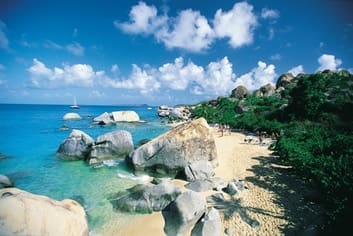INTRODUCTION
The British Virgin Islands, part of a volcanic archipelago in the Caribbean, is a British overseas territory. Comprising 4 main islands and many smaller ones, it’s known for its reef-lined beaches and as a yachting destination. The capital of British Virgin Islands is Road Town. The British Virgin Islands comprise around 60 tropical Caribbean.
The British Virgin Islands have a tropical rainforest climate, moderated by trade winds. Rainfall can be quite variable, but the wettest months on average are September to November and the driest months on average are February and March. tourism is the more important of the two, as it employs a greater number of people within the territory, and a larger proportion of the businesses in the tourist industry are locally owned, as are a number of the highly tourism-dependent sole trader.
HISTORY
The first European sighting of the Virgin Islands was by the Spanish expedition of Christopher Columbus in 1493 on his second voyage to the Americas, who gave the islands their modern name. The great majority of British Virgin Islanders are the descendants of African slaves. Those of European descent constitute a small minority, although their number grew markedly since 1960, as the number of immigrants from the United States and Great Britain increased. The British introduced sugar cane which was to become the main crop and source of foreign trade, and large numbers of slaves were forcibly brought from Africa to work on the sugar cane plantations. The islands gained separate colony status in 1960 and became autonomous in 1967 under the new post of Chief Minister. Since the 1960s, the islands have diversified away from their traditionally agriculture-based economy towards tourism and financial services, becoming one of the wealthiest areas in the Caribbean.
THE ARTS AND HUMANITIES
The British Virgin Islands has rich oral tradition, which includes the recitation of folktales in homes and at family gatherings, and more formal poetic recitations in schools and churches. A local group of writers convenes regularly to share their poems and stories, and several British Virgin Islanders have had their poems, folktales and stories published locally and regionally. The memoir is another popular genre of British Virgin Islands writing.
British Virgin Islands folk dance troupe and local fungi bands (bands made up of guitar, ukulele, washtub bass, scratch gourd, and triangle that play calypso and folk tunes) perform regularly at local cultural events, and represent the BVI at regional cultural festivals and at British Virgin Islands Tourist Board events abroad. Instruction in classical, jazz, and Caribbean music such as steel pan and fungi is offered as part of the school music curriculum, and local musical talent is showcased at school concerts, in public performance for tourists, and during the annual Festival commemorating emancipation. Local and international calypso performers also are central features of Festival shows, as are British Virgin Islands fungi bands, steel pan orchestras and brass bands. A musical series sponsored by the community college brings classical and jazz performers to the BVI bimonthly from October to March.
Read more:
https://www.everyculture.com/Bo-Co/British-Virgin Islands.html#ixzz6XHIs4dwa
TERRITORIAL DRESS
The territorial dress was announced by the Minister of Education & Culture, Honourable Myron V. Walwyn on December, 2011. The prints on the dress depicts unique aspects of our culture. The prints were of the turtle dove, oleander, hibiscus, soursop, sugar apple and the Virgin Islands sloop along with the islands of the Virgin Islands The print has been created in white, blue and red fabrics.


QUADRILLE AND DRESS
Quadrille is the traditional dance of the U.S. Virgin Islands. Quadrille originated in France in the 1700’s, and was brought to the Virgin Islands during the height of its popularity in England, and was adapted as plantation entertainment. The dance which was originated in the early 1900, was performed by four couples in a square formation, and is a precursor to traditional square dancing.
 The dancers are all wearing traditional quadrille costumes made of a madras material. The men wear madras shirts, and the women wear madras skirts, traditionally with white petticoats.
The dancers are all wearing traditional quadrille costumes made of a madras material. The men wear madras shirts, and the women wear madras skirts, traditionally with white petticoats.
The women also wear traditional head-ties also made of madras. The tying of a head-tie is an art in the Virgin Islands, because the way the head-tie is tied, is of great significance.
A head-tie tied with one point signifies that the lady is single. A head-tie tied with two points means that the lady is engaged. Three points indicates that the lady is married. She is not to be touched. And four points means that the lady is divorced or widowed.
References
https://www.britannica.com/place/British-Virgin-Islands
https://bvi.gov.vg/content/territorial-dress
https://www.everyculture.com/Bo-Co/British-Virgin-Islands.html
https://www.britannica.com/place/British-Virgin-Islands
https://en.wikipedia.org/wiki/British_Virgin_Islands#Geography

